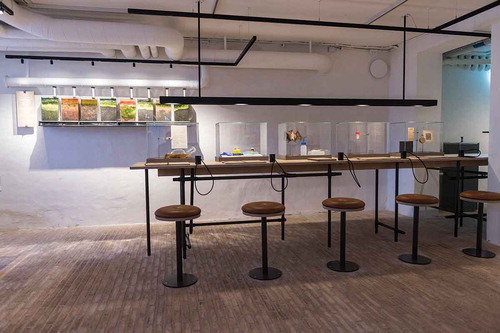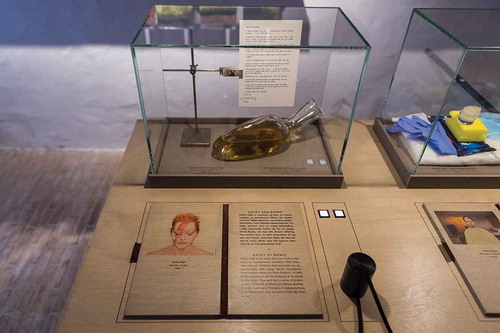Figures & data
Figure 1. View from inside the Mind the Gut exhibition. The exhibition is located in the basement of the Medical Museion, a space filled with wiring and ventilation. These spatial qualities resonate with the themes of complexity and connectedness at the heart of the exhibition, and are also echoed in the exhibition design. Copyright Medical Museion.

Figure 2. Mind the Gut is organized in a series of themes, each showing a type of view upon or intervention in the relationship between mind and gut. Seen here is the theme ‘cultivate’, which features five people who in various ways have tried to manipulate their gut microbes. In the back are a series of Winogradsky columns, living microbial ecosystems with distinct aesthetic qualities.

Figure 3. Silicone torso made to resemble Alexis St. Martin, a young man who in 1822 survived a gunshot wound to the stomach but developed a permanent fistula. He was treated by the physician William Beaumont, who later experimented on him by tying food on silk strings and inserting them into the stomach through the fistula. Beaumont’s pivotal observations was published in 1838, in the book Experiments and Observations on the Gastric Juice, and the Physiology of Digestion. Copyright Medical Museion.

Figure 4. The work of artist Kathy High as featured in the exhibition. In the display case is a copy of the letter she wrote to David Bowie, as well as a glass vessel containing ceramic stool in honey, from her series The Bank of Abject Objects. The audience can also listen to an interview with High about her work. Copyright Medical Museion.


